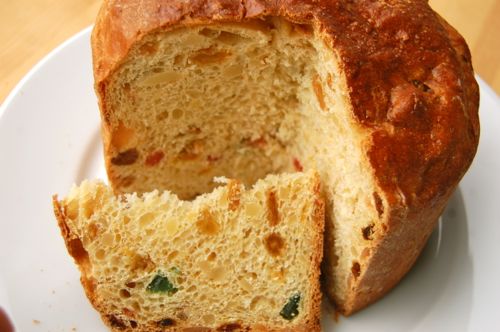Making Panettone

Having baked so many darn things the past eleven years, I confess I get a little cynical about preparations that seem to closely resemble other things. I do a sort of lazy man’s mental math…let’s see…brioche + sugar + candied fruit = yeah, I think I know what that’s all about. I think that’s why I’ve put off making my own panettone for so long. That and the fact that I’ve tasted so many of the impressively-tall-yet-disappointingly-dry versions. You start to wonder what all the fuss is about. Having finally made my own, now I know — and this stuff is good.
READ ON